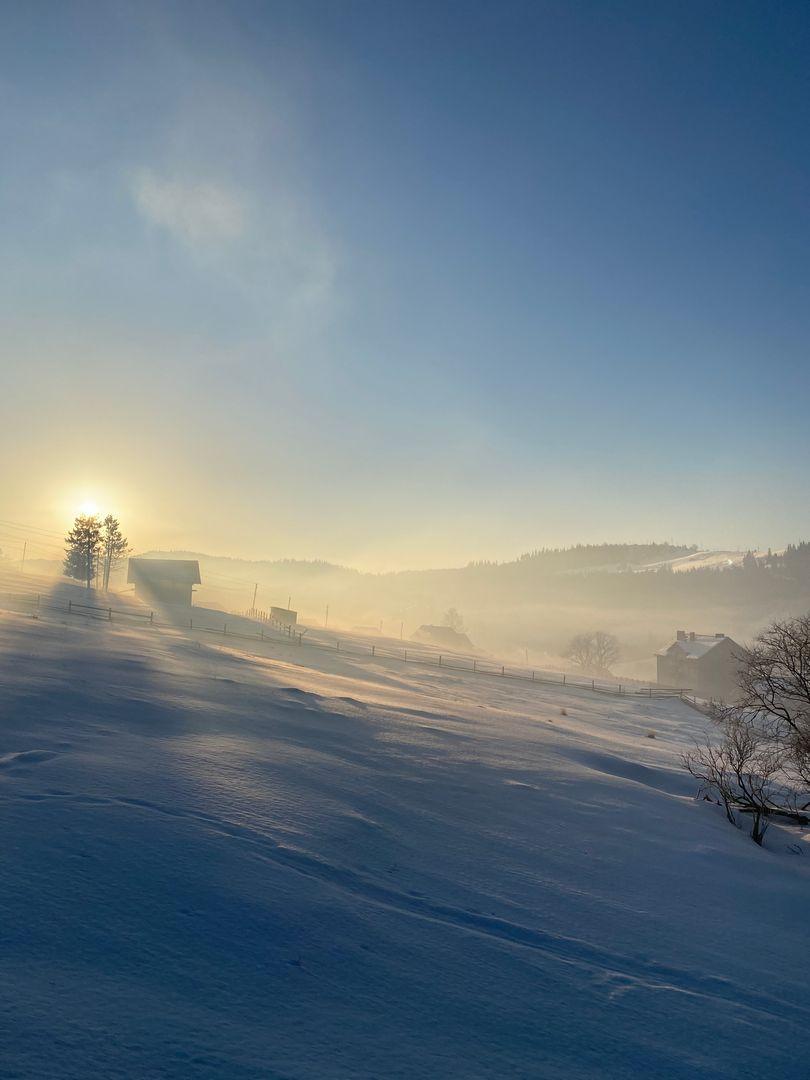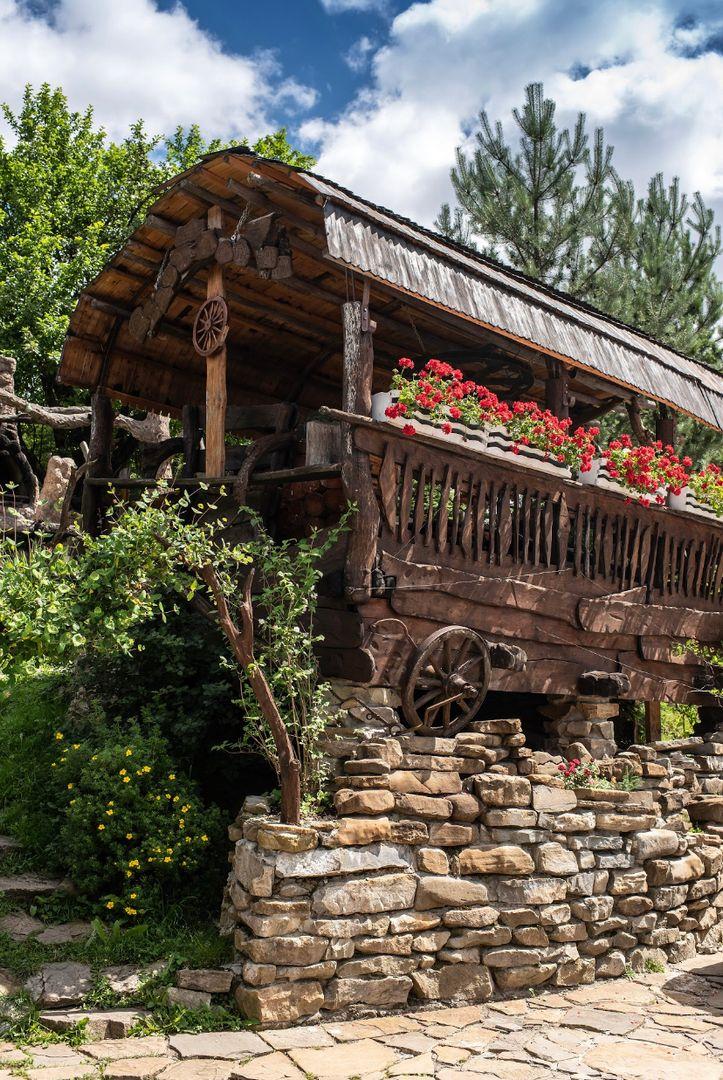The Hutsul Cuisine: What National Dishes Are a Must to Taste During Your Vacation in the Carpathian Mountains?
06 July 2021
The natives of the Carpathian Mountains have their own traditions, lifestyle, and dialect. This turns the rest in the mountains into an adventure and an immersion into a different world with its own identity. Planning your vacation in the Carpathians, don’t miss the chance to try the culinary masterpieces of this region of Ukraine. It is high time for you to learn about the main everyday and festive Hutsul dishes that you can try at local restaurants and cafes.
Significant Hutsul Dishes
The Hutsul cuisine, which is under analysis today, is hearty but not heavy, with nice restorative characteristics. This makes the local dishes perfect if you come for active recreation. The basis of the diet of the Ukrainian mountaineers are cereals, vegetables, legumes, dairy, and fermented dairy products. But not much meat is consumed here. Traditional farming means keeping poultry and farm animals mainly for the sake of milk and eggs. What is definitely worth trying when you come to the Carpathians?
Top 15 Meals of the Hutsul Cuisine
Here are some of the highly recommended dishes:
- Banosh (Banush) is a corn porridge boiled in water, to which one adds cream or sour cream, sometimes grated potatoes. The dish is topped with stewed bacon grease and local brynza. There are many traditional nuances in the preparation of this iconic meal. For example, it is cooked exclusively on an open fire, using only freshly picked sour cream. It is customary to stir the banosh with a wooden spatula and only in one direction.
- Kulesha (mamaliga) is another dish made of cornflour. It is much easier to cook than banosh. Thick golden porridge is dressed with butter and is cut into portions after it cools down. Kulesha is served with brynza pieces on top, as well as with local bacon crisps, fried onions, or mushrooms stewed in sour cream. Because of its dense texture, this porridge is often eaten by Hutsuls instead of bread with sour milk.
- Hutsul borscht is an unusual dish made of white beets, ribs, sauerkraut, and sour cream. Aromatic herbs enhance this wealth of flavors. Although this recipe destroys established notions of borscht, it is capable of winning your love from the first spoonful.
- Rosivnitsa is another soup that warms up beautifully in chilly weather. It is based on cornmeal and sauerkraut. To intensify the flavor of rosivnitsa, the soup is cooked in the broth of baked pork, or if not, in water, adding sunflower oil or cracklings to the dish. It is served with baked potatoes in their jackets on a separate plate. This combination tastes great.
- Zupa (mushroom yushka) — a lot of mushrooms grow in the mountains, and it is a natural thing that they have become a traditional ingredient of Hutsul dishes. This hot meal has got its name under the influence of the Polish language. The most delicious soup is made of porcini mushrooms (fresh or dried), but yushka is also cooked from other species. The dish gets a very rich flavor. Additionally, masters can add small vermicelli or homemade noodles, fried onions, fresh herbs, and spices in the mushroom broth.
- Hutsul stuffed cabbage rolls are made from leaves of sauerkraut. The filling is made of potatoes/corn porridge topped with cracklings or finely chopped meat. The dish is stewed slowly over low heat in the oven for at least 1.5-2 hours, which makes it very tender. Hutsul stuffed cabbage rolls are tiny, so there are a lot of them per serving.
- Knysh — these are small dumplings made of custard corn dough. It is filled with feta cheese, cabbage, or potatoes, grated with garlic and herbs. The knysh is baked in the oven until golden brown.
- Huslyanka is a sour-milk treat that traditionally accompanies almost all Hutsul dishes. It is a kind of yogurt. Huslyanka is made from fresh milk, which is poured into a clay pot coated on the inside with sour cream. Hutsul housewives know how to make yogurt so that the whey does not flake off.
- Mushroom smazhka is a summer dish made exclusively with fresh products. “Harvest” is boiled in a little milk and thickened with flour. It is traditionally served with a little source cream, fried onions, fresh herbs. This is an incredibly flavorful treat, which will appeal to fans of mushrooms.
- Pirohi — this is how dumplings are called in the Carpathians. The dough is often made from spring water, and the filling is made from cottage cheese, brynza with herbs, or fresh berries. The pirohi taste is somewhat different from the usual dumplings.
- Salted milk mushrooms are a great appetizer, which is served with the main course or with alcoholic beverages. The mushrooms are soaked in cold water for three days, boiled, and put in a large bowl. The oak barrel mushrooms are considered the best ingredient. The dish is mixed with allspice (horseradish, currant, cherry), and each layer is abundantly powdered with spices. Milk mushrooms are poured into a cold brine and kept for at least a few weeks.
- Crompli is a potato casserole, in which several kinds of homemade sausage are added. It is a very hearty treat that is served hot. Crompli is a great way to warm up during the cold season.
- Bohrach is a variation of the Hungarian dish that meat-eaters will love. Large pieces of lamb or pork with vegetables and spicy broth are stewed for a long time. Traditionally, bohrach is cooked over an open fire to give it a subtle flavor of smoke.
- Hombovtsy is potato balls stuffed with plums. Fresh stuffing is used in season and canned stuffing at other times. The unusual combination of flavors will not leave you indifferent! There are also variations of the dish, where the base is cottage cheese and the filling is cherries. Salted hombovtsy pieces are served with a mushroom sauce.
- Tsvikli and shukhi are two festive salads based on boiled beet. They are in perfect harmony with hot appetizers. In addition to the main ingredient, includes grated horseradish, and shukhi — fried onions in flour, wild mushrooms, seasoned with black pepper.
Many dishes of the Ukrainian Carpathians are usually cooked over an open fire. This allows the food to soak up a slight smell of smoke and gives the dish a special flavor. So it is almost impossible to repeat most of the Hutsul recipes at home.
Hutsuls and Not Only
The Hutsuls are the best-known subethnic group of Carpathian Ukrainians, but they are “flanked” by the slightly less numerous Boyky and Lemky.
Their culinary traditions are similar, but they also have their own special dishes created under the influence of neighboring Hungary, Poland, and Slovakia. Bojkovski and Lemkovski treats include:
- Kvasnenka — a variation of borscht with the addition of aromatic plums;
- Kyselitsa — sweet oatmeal kissel (kind of starchy jelly);
- Machanka — an analogue of poultry stew, which is eaten by dipping bread into it;
- Knygli — pieces of dough made of potatoes and flour, fried in oil;
- Oshchipok — unleavened bread made of oat flour with mashed potatoes added;
- Salceson — a sausage made of finely chopped by-products and lard, seasoned with garlic, pepper, and other spices.
The Most Delicious Products of the Carpathians
If going a bit far than traditional meals of the region, it is highly recommended to pay attention to the national products described below.
Cheeses
Livestock breeding has always played one of the most important roles in the traditional way of life of the Carpathian mountaineers. Sheep, cows, and goats were kept mainly for the sake of milk. And in order not to lose this valuable product, they started making cheese from it. A few varieties made mainly from sheep’s milk remain traditional for this region.
Brynza is called the “white gold of the Hutsul region”. It is made by mixing heated milk with sourdough obtained from the stomach of a young lamb. The mixture is then whipped with a wooden tool (zhbatalovo) and formed into large heads. They are wrapped in a clean cloth and hung up to remove the excess liquid. That is how you get so-called budz, which is considered to be an independent type of cheese and at the same time is a semi-finished brynza.
The heads are then smoked until they get a dense brown crust, eaten alone, with bread or hot dishes. The rest of the finished pieces are turned into brynza. To do this, budz is kept in the heat, then rubbed with salt, and placed in special tubs, leaving for a month under a heavy crutch. Real Carpathian brynza can be stored for up to two years.
Another type that is definitely worth trying is vurda. It is made when a portion of fresh milk is added to the whey left from the brynza. While it is being heated, a cheese clot is formed, from which the moisture is only slightly squeezed out. An original analog of the European bruel or ricotta is obtained. If you love dairy products, be sure to visit one of the many Carpathian cheese dairies! That way you’ll have real recipes and photos of Hutsul cuisine.
Honey
It is a unique product, the pollen for which the bees tirelessly collect among the lushly blooming grasses of the mountain valleys. Honey from these places is believed to have medicinal properties. Even if you disagree, you should try this delicacy at least because of its amazing taste. In addition to herbal honey, you can taste heather, barberry, clover, mustard, and maple honey.
Alcoholic Beverages
The mild Carpathian climate with lots of sunny days is perfect for growing grapes. That’s why locals have been making alcoholic beverages of different strengths for a long time. In the Carpathian Mountains, you should definitely try some traditional wine (usually sweet varieties), fruit and berry liqueurs, brandy. These drinks have a unique flavor thanks to the local climate and an abundance of herbs that are part of traditional recipes.
These treats will not only give you a lot of pleasure but will also be a wonderful gift for family and friends.



